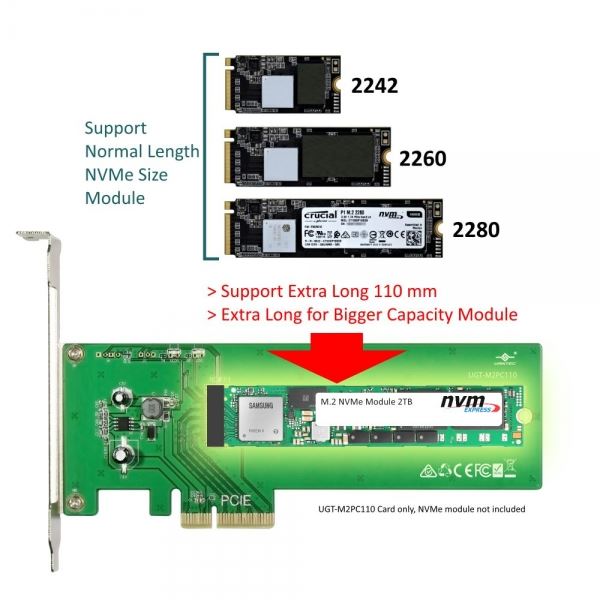This M.2 NVMe SSD PCIe x4 Adapter can support module of different size from 42mm to the Extra Long 110mm. It offers the fastest boot or data access possible via the PCIe interface using 4 lanes of data path straight to the NVMe SSD resulting in super-fast data transfer. This adapter allows for flexible installation of an M.2 (NGFF) NVMe or PCIe AHCI SSD of different size like 42, 60, 80, or 110mm in length with varying and ever growing capacity. This M.2 adapter will give you the best performance possible for your system.
